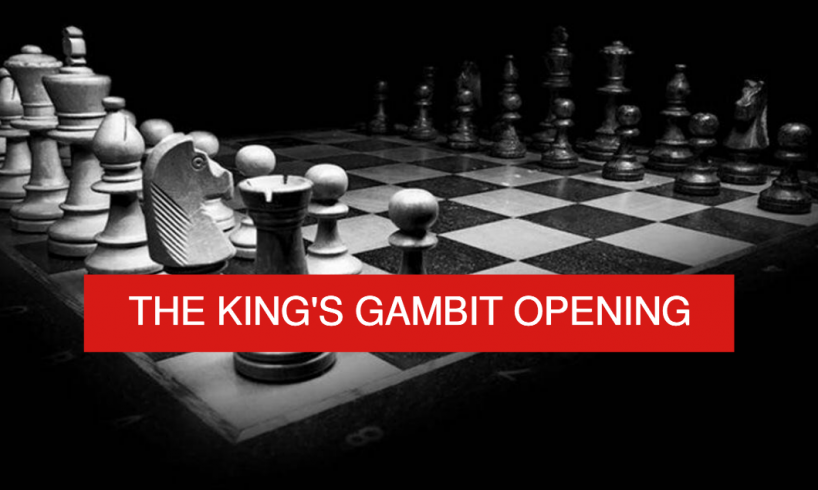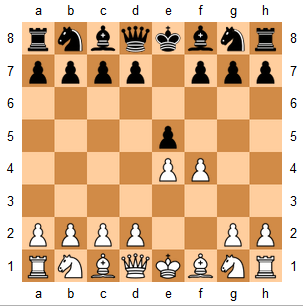
The King’s Gambit is a chess opening that belongs to the field of open games.
The possibilities the opening presents have intrigued the greatest chess minds for years including greats such as Spassky, Tal, and Fischer.

The King’s Gambit begins with the moves:
- e4 e5
- f4
The idea behind the King’s Gambit is: White sacrifices a pawn to get counterplay and an advantage in development.
The King’s Gambit can be divided into four major variations, depending on Black’s options.
The first decision that Black has to make is whether to take the pawn on f4 or not.
Taking it leads to the King’s Gambit Accepted, the main line, while not taking it leads to the King’s Gambit declined.
The four major variations are:
[+] King’s Gambit Accepted: Classical Variation
In this variation Black plays g5 to protect the pawn on f4. This opening runs into a lot of issues for Black since White can get his Knight to e5 and force Black’s pawns to over advance.
Therefore the Fischer variation was created (by Bobby Fischer) to control the e5 square before protecting the f4 pawn.
[+] King’s Gambit Accepted: Fischer Defense
In this variation Black first takes away the e5 square from the White Knight.
Then proceeds to protect the f4 pawn with his g pawn. This variation prevents Black from dealing with a lot of headaches when White’s Knight gets on the e5 square.
[+] King’s Gambit Accepted: Bishop’s Variation
White develops the Bishop instead of the Knight. The idea is: White is okay with losing the right to castle since he will be up in development by two pieces over Black.
[+] King’s Gambit Declined (main line)
In the King’s Gambit Declined, Black decides not to accept White’s sacrifice.
He will try to exploit the fact that playing f4 weakens the King, by playing moves like Bc5 (to prevent White from castling) or immediately open up lines for attack by playing d5.
Watch the videos below to watch more detailed explanations of King’s Gambit opening, multiple variations, and extended lines.






